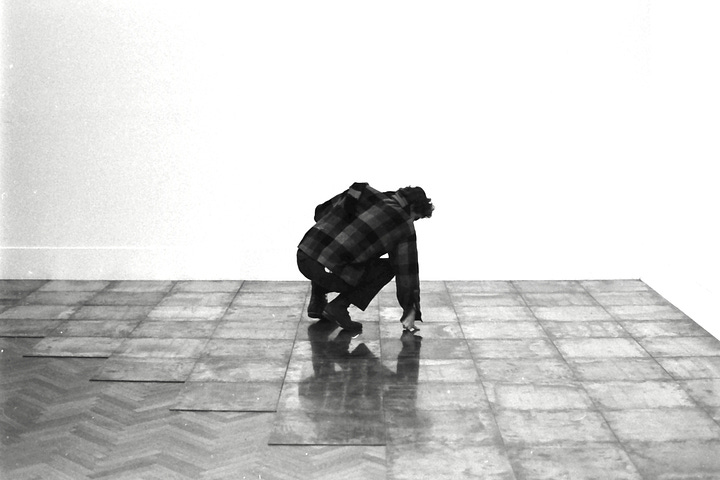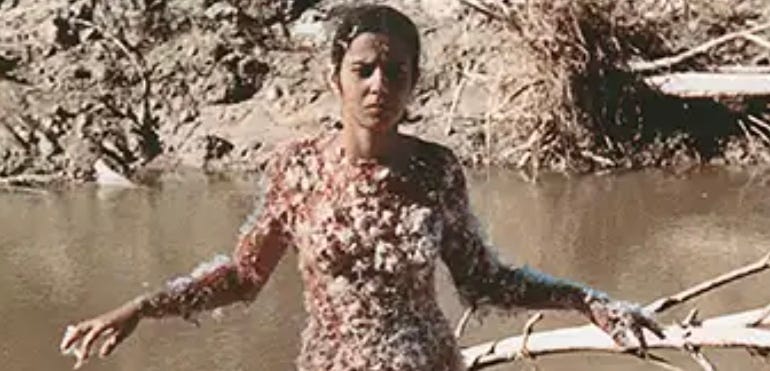In Washington D.C at the Corcoran Gallery of Art on January 13, 1977, I was visiting the special exhibit of the work of Carl Andre, Richard Long, and Barry LeVa. In one large space there was a piece by Carl Andre consisting of dozens of square copper plates arranged in a corner to form a triangle twelve squares by twelve squares on each side and twelve squares diagonally across the front edge.
I walked into the middle of the copper plates and pressed my thumb onto one of the central squares, intending the oils from my skin to discolor the copper, leaving a permanent print of my thumb on this work of art.
My artwork consists of this action on that day and the documentation of it.


If you are a denizen of the art world, you will know the heart-rending story that swirls around Carl Andre and his wife, the Cuban-American artist Ana Mendieta. If you do not know the story, look it up. Wikipedia has a very good assessment of Medieta’s career including the “death and controversy.” The Guardian wrote a good story about her a few years ago linked in the photo below.
When we talk about living one’s life as a work of art, Ana Mendieta is a very important artist to pay attention to, as you will see. She was already an inspiration when she died at the tender age of 36. On the day she “went out the window,” as Carl Andre so famously and cynically put it, Sheila and I were living in the East Village and both working for NYU. The building she fell from was four blocks from where I was working at 80 Washington Square East Galleries and two blocks from Sheila’s office in the Linguistics Department on Washington Place. As you might imagine, the entire community was traumatized.
Of course, the piece I made that day in the Corcoran would have been eight years before her death and long before I or most people had heard of Ana Mendieta. She didn’t move to New York until 1977, didn’t marry Carl Andre until 1985. Carl Andre, on the other hand was already well known in 1977. He had made a name for himself by strutting around Soho in overalls and big beard, publishing art criticism and by making work that challenged the primacy of painting and claimed to “resist” the corrupting influence of the art market. Laughable now. His piece Copper Steel Alloy Square, a piece similar to the one shown above, sold for nearly 3 million dollars at Christies in 2019.
In 1977, I had already put my finger on the hypocrisy of Andre’s “resistance,” and metaphorically stuck my thumb in his eye and the eye of the people who would one day use his work as a piece of their financial portfolio. By 1985, he undoubtedly had come to understand that Ana Mendieta was the far better artist, as history has shown and will continue to show. Which makes his statement to the police, “we had a quarrel about the fact that I was more, eh, exposed to the public than she was,” even more absurd. Mendieta was an artist whose work actually did resist the market, actually was uncollectible, whose work was chthonic and ephemeral and speculative as opposed to Andre and his cohort’s logical and imposing and domineering. More importantly, she was an artist whose life pointed a way forward for artists of the next generation who want to make art that is deeply attuned to the natural world and to the place of the human species in that world and for artists who want to work outside the structures and strictures of the art establishment.
Thank you Ana.






nicely said, you hooligan!
chthonic-one of my favorite words